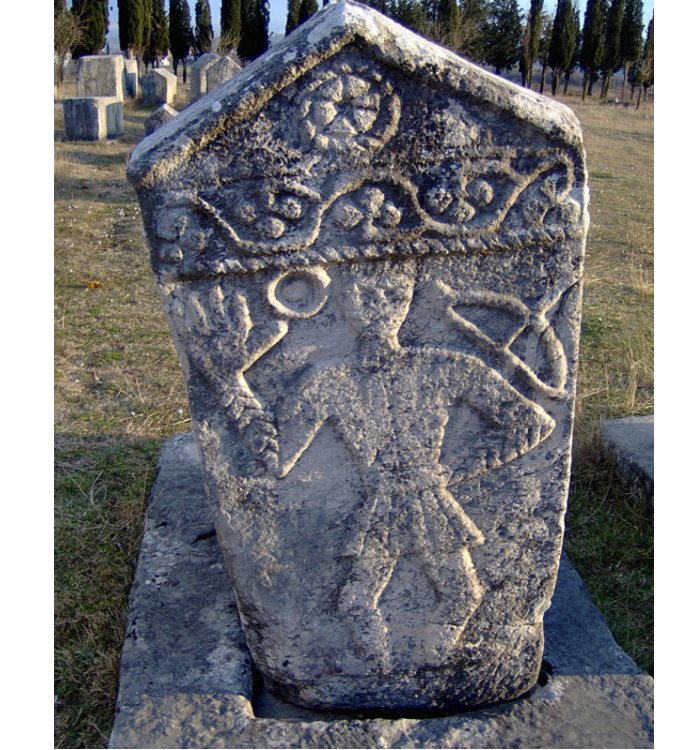Enigmatic ‘Stone Sleepers’ – Megalithic Tombstones ‘Stecci’ In The Western Balkans
A. Sutherland - AncientPages.com - Enigmatic Stecci, the tombstones, often referred to as stone sleepers, are among the oldest witnesses of Bosnia and Herzegovina's history.
They are considered the region’s most legendary symbol. A single tombstone or collection of monoliths is scattered throughout the entire territory of present-day Bosnia and Herzegovina, as well as in parts of Croatia, Serbia, and Montenegro.
Sir Arthur John Evans, an English archaeologist and pioneer in the study of Aegean civilization in the Bronze Age, described some stecci during his travels through Bosnia and Herzegovina in 1875.
‘Stecci’ probably appeared in the second half of the 12th century, with the first phase lasting throughout the 13th century. A period of the most intensive production and use of this kind of decoration dates to the 14th and 15th centuries, but in the 16th century, the use of stecci completely ceased.
There are about 70,000 medieval stecci tombstones recorded at 3,300 odd sites. About 60,000 monuments are located in Bosnia and Herzegovina, 4,400 in Croatia, 3,500 in Montenegro, and 4,100 in Serbia.
Based on historical records, the oldest mention of stecci dates back to 1530 and comes from the notes of the 16th-century diplomat Benedict Curipeschitz, who traveled to Constantinople.
Stecci in Radimlja necropolis. source
Later, Sir Arthur John Evans, an English archaeologist and pioneer in the study of Aegean civilization in the Bronze Age, described some stecci during his travels through Bosnia and Herzegovina in 1875. Evans, who referred to them as "mysterious tombstones," suggested that they belonged to medieval Bogomil heretics and their tradition in the Balkans.
Another theory proposes that stecci are related to Vlach people, who originated from either the Dacians or the Thracians along the Danube.
These stone slabs are sometimes as heavy as 30,000 kilograms; on average, they are two meters long and one meter wide. The slates are between 30 and 50 centimeters high and the sarcophagi and tombs are about 1.5 meters in height. The height of the pillars ranges from two to three meters.
Often carved in bas-relief, stecci are found in many different shapes. Many of them are horizontal monoliths, commonly shaped like chests, while others are gable-roofed sarcophagi. Yet others are more simple slabs or upright stelae or pillars, with the occasional massive cross or another form.
Ancient epitaphs on stecci or enigmatic, difficult to understand inscriptions recorded in the Bosnian Cyrillic alphabet, contain messages from the past, which remain undeciphered. Credit: Adobe Stock - Ajdin Kamber
In his book "Homeric Whispers: Intimations of Orthodoxy in the Iliad and Odyssey", Roberto Salinas Price describes an interesting place known as the Palace of Priam also known as the Sanctuary of Apollo and the (once) intact oval platform of a megalithic observatory with its major axis aligned east-west. … Up until some decades ago (mid-20th century) there were twelve Bogomil stecci – large limestone blocks, almost always hewn into the shape of a V-roofed house, surrounding the chapel..”
In the center is the small chapel of Sveti Stephan, one of the most magnificent Medieval churches constructed in the historic city of Nesebur. The description of this sanctuary as the Palace of Priam… is as follows:
“the beauteous palace of Priam, adorned with polished sun halls and in it were fifty chambers of polished stone, built each hard by the other; therein the sons of Priam were wont to sleep beside their wedded wives, and for his daughters over against them on the opposite site within the court were twelve roofed chambers of polished stone, built each hard by the other; therein slept Priam’s sons-in-law beside their chaste wives….”
The “polished sun halls…” is a reference to the area between an outer and inner ring of stones aligned in such a manner as to fix a set of points on the horizon (sunrises and sunsets)…”
‘Stecci’ probably appeared in the second half of the 12th century, with the first phase lasting throughout the 13th century. A period of the most intensive production and decoration were the 14th and 15th centuries. In the 16th century, their use completely ceased.
The monolithic stecci are richly decorated with animals, spirals, floral motifs, crosses, fleurs-de-lis, scenes of dancing, hunting and battles, bunches of grapes, and ancient symbols including stars, crescent moons, and suns. Ancient epitaphs on stecci or enigmatic, difficult to understand inscriptions recorded in the Bosnian Cyrillic alphabet, contain messages from the past, which remain undeciphered.
Especially interesting are the large human figures, often described as ‘ducal’, dressed in tunics, with one arm raised and palm open or flanked by two children. There are also many different theories regarding the meaning of the decorations on the tombstones.
There are also many different theories regarding the meaning of the decorations on the tombstones. Is their origin in Bogomil tradition, or do they represent Vlach symbolism, often suggested by several scholars? Could they be related to pagan or Christian beliefs?
Without a doubt, stecci represents a unique phenomenon. They have been studied for more than a century, and several thousands of them have been found in different locations of the Western Balkans. However, many questions regarding their true origin and purpose still remain. The ethnic identity of the stecci remains an open subject to discussion. Until now, the most dominant, but still not fully accepted, theory associates them with the autochthonous Vlach communities in the Balkan regions.
However, opponents of this theory consider that their demographic number was too small, were profane and isolated, argue that the Vlachs did not build them from the fall of the Western Roman Empire,
or that mythological symbols are related to Old Slavic rather than "Vlach" pagan beliefs.
These megalithic monuments exist, and many of them have been registered, but they remain unexcavated.
Updated on January 27, 2024
Written by – A. Sutherland - AncientPages.com Senior Staff Writer
Copyright © AncientPages.com All rights reserved. This material may not be published, broadcast, rewritten or redistributed in whole or part without the express written permission of AncientPages.com
Expand for referencesMore From Ancient Pages
-
 Earliest Evidence Of Evolutionary Trait That Enabled Dinosaurs To Become Giants – Brazilian Fossil Reveals
Evolution | Jun 21, 2023
Earliest Evidence Of Evolutionary Trait That Enabled Dinosaurs To Become Giants – Brazilian Fossil Reveals
Evolution | Jun 21, 2023 -
 Artificial Intelligence Reveals The Out Of Africa Expansion Is More Complex Than Previously Thought
Archaeology | Oct 18, 2021
Artificial Intelligence Reveals The Out Of Africa Expansion Is More Complex Than Previously Thought
Archaeology | Oct 18, 2021 -
 Vijayanagara King Bukkaraya’s Earliest Inscription Discovered
Archaeology | Oct 7, 2015
Vijayanagara King Bukkaraya’s Earliest Inscription Discovered
Archaeology | Oct 7, 2015 -
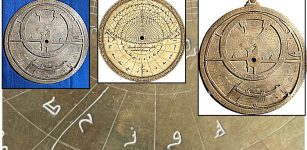 Rare Eleventh-Century Astrolabe Unearthed Recently Sheds Light On Islamic-Jewish Scientific Exchange
Scripts, Paintings & Inscriptions | Mar 4, 2024
Rare Eleventh-Century Astrolabe Unearthed Recently Sheds Light On Islamic-Jewish Scientific Exchange
Scripts, Paintings & Inscriptions | Mar 4, 2024 -
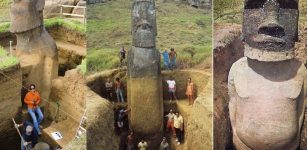 Easter Island’s Statues Reveal Bodies Covered With Unknown Ancient Petroglyphs
Archaeology | Jan 21, 2014
Easter Island’s Statues Reveal Bodies Covered With Unknown Ancient Petroglyphs
Archaeology | Jan 21, 2014 -
 Buddha Statues With Broken Arms, Legs And Without Heads Unearthed In Angkor Wat, Cambodia
Archaeology | Apr 22, 2020
Buddha Statues With Broken Arms, Legs And Without Heads Unearthed In Angkor Wat, Cambodia
Archaeology | Apr 22, 2020 -
 Mysterious Ancient Statues From Jordan With Millennia-Old Secrets
Civilizations | Oct 24, 2018
Mysterious Ancient Statues From Jordan With Millennia-Old Secrets
Civilizations | Oct 24, 2018 -
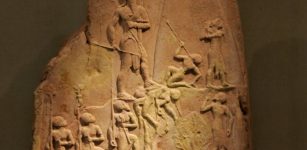 Did Climate Change End The Akkadian Empire?
Civilizations | Jul 17, 2019
Did Climate Change End The Akkadian Empire?
Civilizations | Jul 17, 2019 -
 850,000-Year-Old Remains Of Homo Antecessor Found At Atapuerca, Spain
Archaeology | Jul 30, 2024
850,000-Year-Old Remains Of Homo Antecessor Found At Atapuerca, Spain
Archaeology | Jul 30, 2024 -
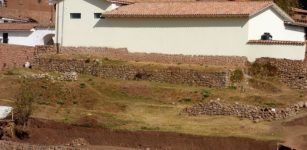 Impressive Inca Agricultural Terraces Discovered In Cusco, Peru
Archaeology | Jan 25, 2018
Impressive Inca Agricultural Terraces Discovered In Cusco, Peru
Archaeology | Jan 25, 2018 -
 Little-Known Mummy Fragments Analyzed By Scientists
Archaeology | Jan 3, 2024
Little-Known Mummy Fragments Analyzed By Scientists
Archaeology | Jan 3, 2024 -
 Rosicrucians: Facts And History About The Mysterious Secret Society
Featured Stories | Oct 20, 2016
Rosicrucians: Facts And History About The Mysterious Secret Society
Featured Stories | Oct 20, 2016 -
 Secrets Of Viking Crystal Sunstones Revealed By Modern Science
Archaeology | Apr 5, 2018
Secrets Of Viking Crystal Sunstones Revealed By Modern Science
Archaeology | Apr 5, 2018 -
 Mysterious Mount Roraima Surrounded By Myths And Clouds Of Dense Fog
Featured Stories | Nov 13, 2018
Mysterious Mount Roraima Surrounded By Myths And Clouds Of Dense Fog
Featured Stories | Nov 13, 2018 -
 On This Day In History: Eugène Dubois Who Discovered Remains Of Java Man Was Born – On Jan 28, 1858
News | Jan 28, 2017
On This Day In History: Eugène Dubois Who Discovered Remains Of Java Man Was Born – On Jan 28, 1858
News | Jan 28, 2017 -
 Gigantic Ancient Palace Unearthed In Mexico’s Valley Of Oaxaca
Archaeology | Mar 29, 2017
Gigantic Ancient Palace Unearthed In Mexico’s Valley Of Oaxaca
Archaeology | Mar 29, 2017 -
 Childhood Home Of Jesus May Have Been Found Underneath The Sisters Of Nazareth Convent
Archaeology | Nov 24, 2020
Childhood Home Of Jesus May Have Been Found Underneath The Sisters Of Nazareth Convent
Archaeology | Nov 24, 2020 -
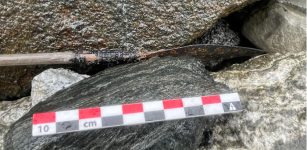 Arrow Pre-Dating The Vikings Discovered After Being Lost In The Ice For 1,500 Years
Archaeology | Aug 25, 2022
Arrow Pre-Dating The Vikings Discovered After Being Lost In The Ice For 1,500 Years
Archaeology | Aug 25, 2022 -
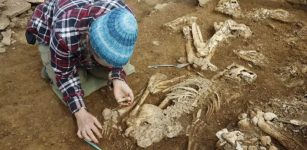 Riddle Of Orkney’s Lost Tomb – Fascinating Neolithic Discovery
Featured Stories | Nov 15, 2023
Riddle Of Orkney’s Lost Tomb – Fascinating Neolithic Discovery
Featured Stories | Nov 15, 2023 -
 Few Witches Were Executed In Wales In The Middle Ages – Why?
Featured Stories | Oct 29, 2024
Few Witches Were Executed In Wales In The Middle Ages – Why?
Featured Stories | Oct 29, 2024


